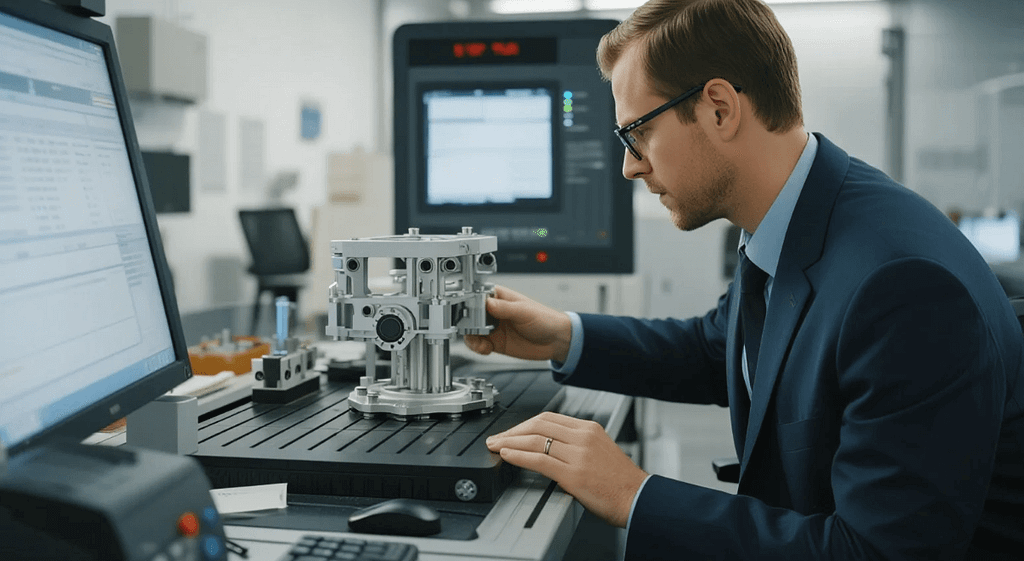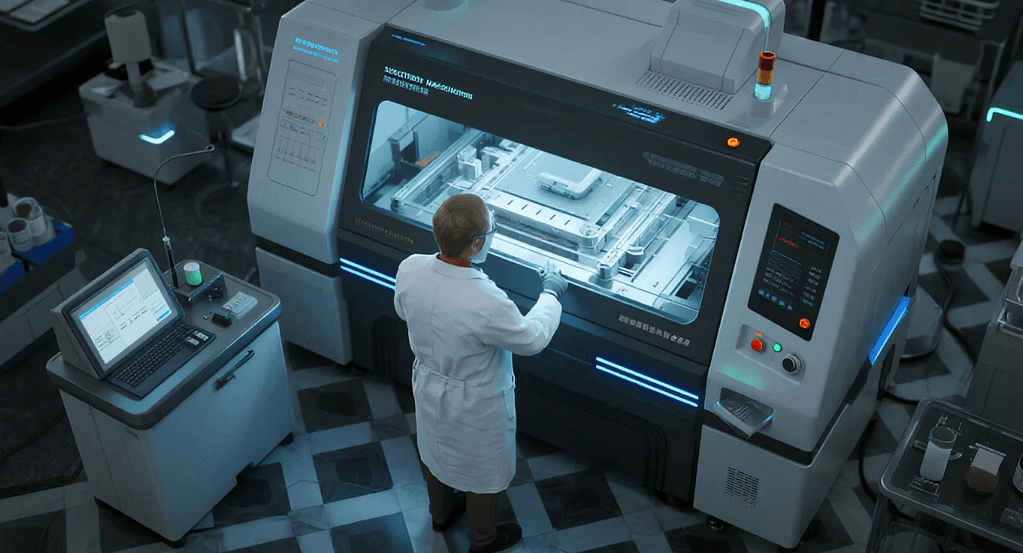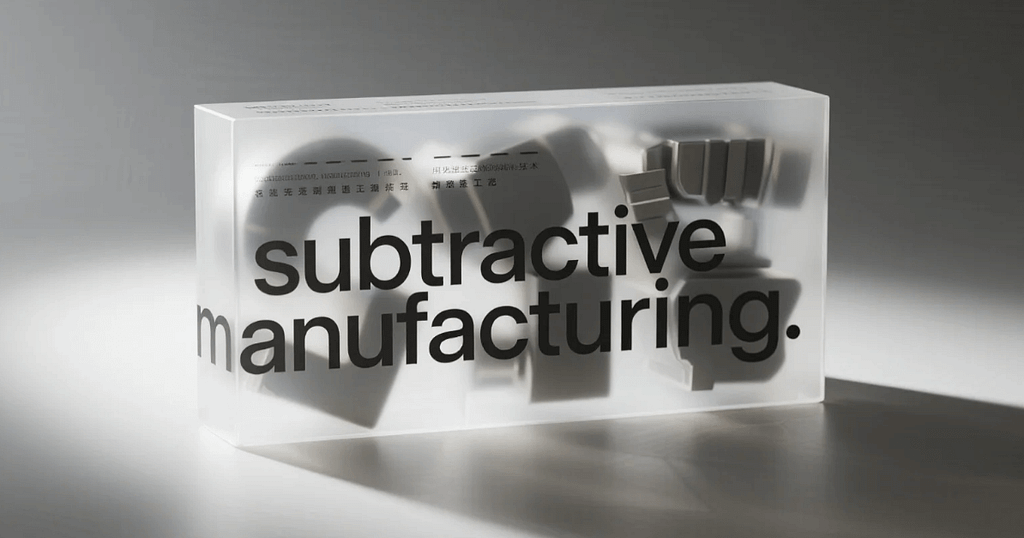In the rapidly evolving landscape of modern product development, manufacturers constantly seek the most efficient and effective methods to transform digital designs into tangible, high-quality components. At the heart of this quest lies a fundamental choice between two distinct approaches: additive manufacturing vs. subtractive manufacturing. These two paradigms represent fundamentally different ways of creating parts, each with unique strengths, limitations, and ideal applications. For businesses that rely on precision industrial model services, like CAPtec, understanding the nuances of additive manufacturing vs. subtractive manufacturing is crucial for making informed decisions, optimizing production, and achieving superior results. This article explores these core concepts, highlighting their defining characteristics and how they each contribute to the creation of advanced industrial models.
Understanding the Core Concepts: Additive Manufacturing vs. Subtractive Manufacturing
While both additive manufacturing vs. subtractive manufacturing aim to produce a final part from raw material, they achieve this goal through opposing methodologies.
Additive Manufacturing: Building Up Layer by Layer
Additive manufacturing, commonly known as 3D printing, creates objects by adding material layer by layer until the complete part is formed. This method starts with a digital 3D model (CAD file) that is sliced into numerous thin cross-sections. The printer then precisely deposits or fuses material according to these slices, gradually building the object from the ground up.
Key Characteristics of Additive Manufacturing:
- Material Addition: The defining feature is the progressive addition of material.
- Minimal Waste: Because material is only added where needed, waste is significantly reduced compared to subtractive methods.
- Geometric Complexity: Additive processes excel at producing highly intricate geometries, internal lattice structures, organic shapes, and complex internal channels that are often impossible or prohibitively expensive to create with traditional methods.
- Design Freedom: Designers have immense freedom, allowing for topology optimization and part consolidation, turning multiple components into a single, integrated print.
- Common Materials: Plastics (e.g., PLA, ABS, Nylon), metals (e.g., steel, titanium, aluminum alloys), ceramics, and composites.
- Technologies: Fused Deposition Modeling (FDM), Stereolithography (SLA), Selective Laser Sintering (SLS), Selective Laser Melting (SLM), Electron Beam Melting (EBM), Binder Jetting.
Subtractive Manufacturing: Removing Material from a Block
Subtractive manufacturing encompasses traditional fabrication methods that create objects by removing material from a larger block of raw stock. This involves cutting, drilling, milling, grinding, or turning the material until the desired shape and dimensions are achieved. Common tools include CNC (Computer Numerical Control) machines, lathes, mills, and drills.
Key Characteristics of Subtractive Manufacturing:
- Material Removal: The defining feature is the progressive removal of material.
- Material Waste: The process generates significant material waste in the form of chips, swarf, or off-cuts.
- High Precision and Surface Finish: Subtractive methods, particularly precision machining, are renowned for achieving extremely tight dimensional tolerances and exceptionally smooth surface finishes.
- Material Strength: Parts often retain the full strength and integrity of the original bulk material.
- Common Materials: Metals (e.g., steel, aluminum, brass, titanium), plastics, wood, composites, and ceramics.
- Technologies: CNC Milling, CNC Turning, Drilling, Grinding, Electrical Discharge Machining (EDM), Waterjet Cutting.
The Strategic Choice: Additive Manufacturing vs. Subtractive Manufacturing for Industrial Models

For businesses utilizing industrial model services, the decision between additive manufacturing vs. subtractive manufacturing is strategic and depends heavily on the specific requirements of the prototype or model. Both methods offer distinct advantages that make them suitable for different stages of product development.
When to Choose Additive Manufacturing for Industrial Models
Additive manufacturing truly shines when design flexibility and rapid iteration are paramount, especially in the early stages of product development.
Rapid Prototyping and Concept Validation
Additive manufacturing excels at quickly producing initial conceptual models. Designers can go from a CAD file to a physical prototype in hours or days, allowing for rapid visualization and validation of basic form and fit. This accelerates the design cycle, making it ideal for multiple iterations where speed and cost-effectiveness for single units are crucial.
Complex Geometries and Internal Features
If an industrial model features highly intricate internal channels (e.g., for fluid flow analysis), lightweight lattice structures, or organic shapes that are impossible or too expensive to machine, additive manufacturing is the clear choice. It handles complexity with ease, allowing engineers to test designs that push the boundaries of conventional manufacturing.
Part Consolidation for Functional Prototypes
Additive manufacturing enables the consolidation of multiple assembled parts into a single printed component. For functional industrial models, this reduces assembly time and complexity, providing a more integrated prototype that mimics the streamlined design goals of the final product.
Customization and Low Volume Runs
For highly customized industrial models or very low-volume production where unique features are required for each unit, additive manufacturing eliminates the need for expensive tooling, making it a more economical choice.
When to Choose Subtractive Manufacturing (Precision Machining) for Industrial Models

Subtractive manufacturing, particularly precision machining, is often preferred when accuracy, material strength, and surface finish are non-negotiable for industrial models, especially in later stages of development or for critical applications.
Achieving Ultra-Tight Tolerances and High Precision
For industrial models that demand exceptionally tight dimensional tolerances, often measured in microns, subtractive manufacturing (specifically CNC machining) is unparalleled. This is crucial for verifying precise component fit, critical clearances, and accurate functional mechanisms. A model of a complex gearbox, for example, needs precisely machined gears to ensure correct meshing and operation.
Superior Surface Finishes
When an industrial model requires a very smooth, consistent, and aesthetically pleasing surface finish, precision machining often provides superior results straight from the machine. This is vital for models used in aerodynamic testing, ergonomic evaluations, or high-end product presentations where visual fidelity is paramount.
High Material Integrity and Mechanical Properties
If the industrial model needs to withstand significant mechanical stress, high temperatures, or specific environmental conditions during functional testing, subtractive manufacturing is often preferred. Parts machined from solid stock typically retain the full strength, ductility, and fatigue resistance of the original material, providing a more reliable representation for rigorous testing.
Testing Production-Grade Materials
For industrial models that must precisely replicate the material properties of the final product, subtractive machining works directly with standard engineering-grade plastics and metals, including high-performance alloys. This allows for testing prototypes in materials identical to those used in mass production, providing more accurate performance data.
Demonstrating Production Processes
For some industrial models, the prototype itself needs to demonstrate aspects of the intended production process. A precisely machined part can highlight the capabilities and achievable tolerances of a CNC milling operation for a client considering that manufacturing route.
The Symbiotic Relationship: Leveraging Both for Optimal Results
While additive manufacturing vs. subtractive manufacturing are distinct, they are not mutually exclusive. In fact, many advanced product development cycles strategically leverage both methods for optimal results, particularly in precision industrial model services.
For example, a company might use additive manufacturing for initial rapid prototyping and design iterations, quickly exploring various concepts for form and fit. Once the design is largely finalized, they might then switch to precision machining to create a high-fidelity, functionally accurate industrial model for rigorous performance testing and final design validation, using production-grade materials and achieving tight tolerances.
Furthermore, hybrid manufacturing processes are emerging that combine elements of both. For instance, a part might be additively manufactured to create its complex internal structure, and then subtractively machined on its external surfaces to achieve critical tolerances and a superior surface finish. This synergistic approach harnesses the strengths of both technologies, delivering components that surpass what either method could achieve alone.
Choosing Your Partner: CAPtec’s Approach
At CAPtec, we understand the intricate balance between additive manufacturing vs. subtractive manufacturing. We recognize that the optimal choice depends on your specific project requirements, budget, and timeline. Our expertise spans both domains, allowing us to guide you in selecting the most appropriate method or combination of methods for your precision industrial models. We prioritize delivering tangible value, ensuring your prototypes accurately validate your designs and accelerate your product’s journey to market. Our commitment to precision, quality, and material integrity means you can trust us to bring your most demanding projects to fruition.
Conclusion
The debate of additive manufacturing vs. subtractive manufacturing is not about which method is inherently “better,” but rather about which is best suited for a particular application and stage of product development. Additive manufacturing offers unparalleled design freedom and speed for early-stage prototyping and complex geometries, while subtractive manufacturing, especially precision machining, delivers superior accuracy, surface finish, and material integrity for functional prototypes and demanding applications. For businesses relying on precision industrial model services, a clear understanding of these distinct strengths is vital. By strategically employing both methodologies, or by choosing a partner like CAPtec that masters both, you can navigate the complexities of modern manufacturing, optimize your development cycles, and confidently bring innovative products to market.
FAQ
Q1: What is the main difference between additive and subtractive manufacturing?
A1: Additive manufacturing builds objects layer by layer from nothing, while subtractive manufacturing creates objects by removing material from a larger block of raw material.
Q2: Which method is generally faster for initial prototypes: additive or subtractive?
A2: Additive manufacturing (3D printing) is generally faster for initial, low-cost prototypes, especially for complex designs, as it does not require specialized tooling.
Q3: Which manufacturing method provides higher precision and better surface finish for industrial models?
A3: Subtractive manufacturing, particularly precision machining, typically offers higher dimensional precision and superior surface finishes for industrial models compared to most additive manufacturing processes.
Q4: Can both additive and subtractive manufacturing be used in the same product development cycle?
Q4: Absolutely. It’s common to use additive manufacturing for early design iterations and conceptual models, then switch to subtractive manufacturing (precision machining) for high-fidelity functional prototypes that require tighter tolerances and production-grade materials.
Q5: Which method generates more material waste?
Q5: Subtractive manufacturing generally generates significantly more material waste (chips, swarf) as material is removed from a larger block, whereas additive manufacturing uses material more efficiently, building up only what’s needed.
Q6: Is additive manufacturing always suitable for high-strength functional parts?
Q6: While metal additive manufacturing can produce strong parts, subtractive manufacturing often yields parts with superior material integrity and mechanical properties directly comparable to wrought materials, making it preferred for highly demanding functional applications.
Q7: How do design complexities influence the choice between additive and subtractive manufacturing?
Q7: Additive manufacturing excels at creating highly complex geometries, intricate internal structures, and organic shapes. Subtractive manufacturing can create complex external features but is limited by tool access and is less suited for internal complexities that cannot be reached by a cutting tool.
